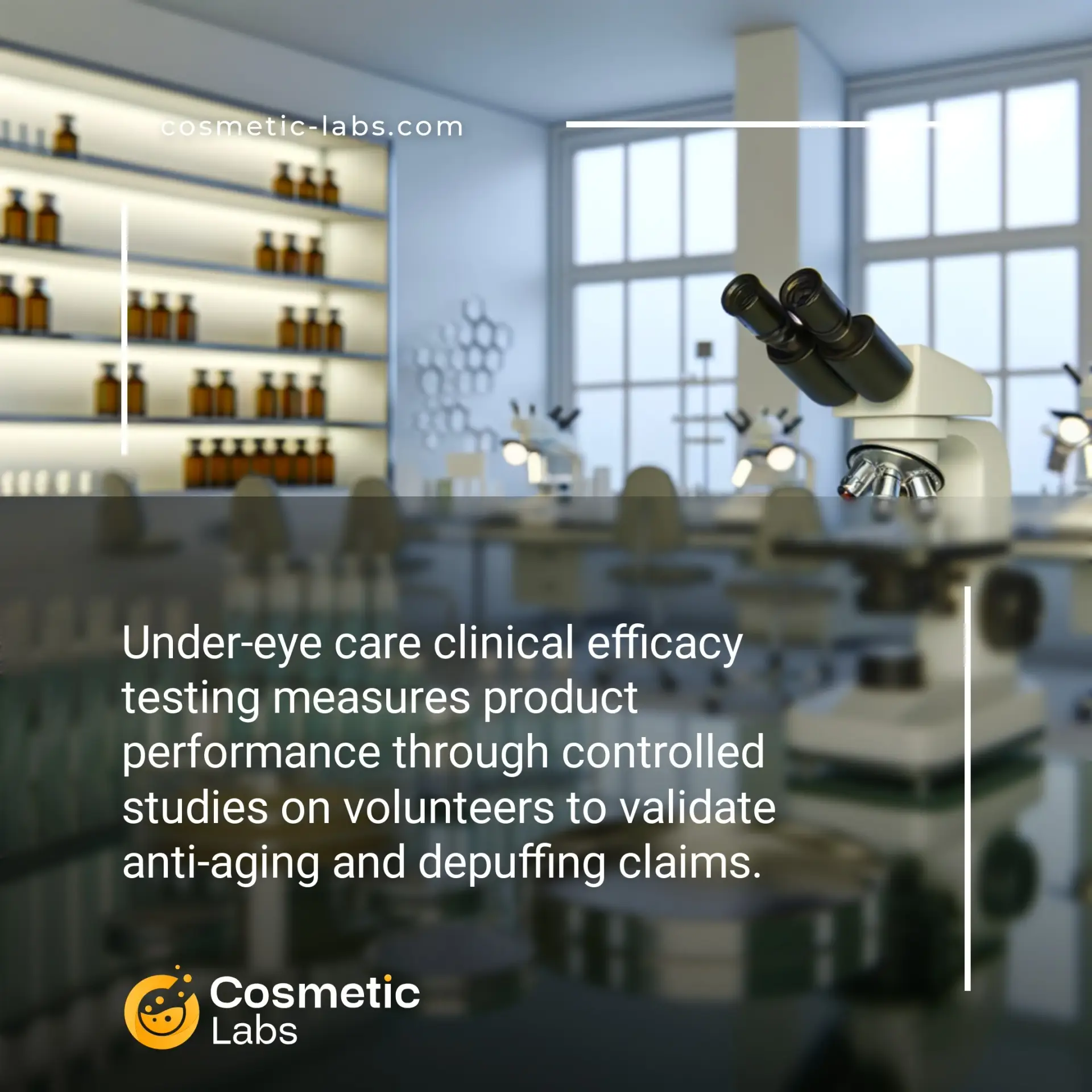Under-Eye Care Clinical Testing Services For Beauty Brands

What is Under-eye care efficacy testing?
Under-eye care clinical efficacy testing services validate your product’s performance claims through controlled studies measuring parameters like puffiness reduction, dark circle improvement, and hydration levels. Our partner labs conduct instrumental assessments using corneometry and chromametry alongside consumer perception studies, typically over 4-8 week periods. What many brands don’t realize is that FDA guidelines now scrutinize eye area claims more closely than general facial products, making proper documentation through clinical testing your best defense against regulatory challenges.
Why do you need this service?
Brands use under-eye efficacy testing to validate anti-aging claims like wrinkle reduction and puffiness improvement through controlled clinical studies. Our platform’s partner labs conduct consumer perception studies and instrumental measurements that generate substantiated marketing claims for product launches, helping you meet regulatory requirements while building consumer trust through proven results.
Who provides Under-eye care efficacy testing services?
All cosmetic labs providing Under-eye care efficacy testing services
There is no company providing these services at the moment.
Under-Eye Care Clinical Efficacy Testing Services
Cosmetic labs provide under-eye care clinical efficacy testing to validate your product claims through controlled human studies. These specialized tests measure real-world performance of eye creams, serums, and treatments on delicate periorbital skin.
Anti-Aging and Wrinkle Reduction Testing
Labs measure fine line reduction using advanced imaging techniques like VISIA complexion analysis and 3D surface mapping. Test subjects apply your product for 4-12 weeks while researchers track changes in crow’s feet depth and skin texture.
Common testing protocols include:
- Wrinkle depth measurements using silicone replicas
- Skin elasticity assessments with cutometer devices
- Firmness evaluations through dermal thickness analysis
- Hydration level monitoring with corneometer readings
Results provide statistical data you can use in marketing claims and regulatory submissions.
Dark Circle and Puffiness Reduction Studies
Labs test your products’ ability to reduce periorbital hyperpigmentation and under-eye bags through colorimetric analysis and volumetric measurements. Studies typically run 8-12 weeks with before-and-after documentation.
Testing methods include:
- Chromameter readings to quantify skin lightening
- Photography under standardized lighting conditions
- 3D imaging to measure puffiness volume changes
- Consumer perception surveys for subjective improvements
Partner with labs on our platform to design custom protocols that match your specific product positioning and target demographics.
Practical Applications of Under-Eye Care Clinical Efficacy Testing
Brand owners rely on under-eye care clinical efficacy testing applications to validate product claims and differentiate their formulations in competitive markets.
Anti-Aging Eye Cream Validation
Labs conduct wrinkle depth measurements using 3D imaging systems like PRIMOS or Antera to quantify fine line reduction. Clinical studies typically run 8-12 weeks with 30-50 participants, measuring changes in crow’s feet depth and skin elasticity around the orbital area.
Hydration testing employs corneometry to track moisture retention levels, while elasticity assessments use cutometry to measure skin firmness improvements. These protocols generate the data needed for substantiated anti-aging claims on product packaging and marketing materials.
Dark Circle and Puffiness Reduction Testing
Chromameter measurements quantify melanin and hemoglobin levels to document dark circle lightening over 4-8 week periods. Labs photograph participants under standardized lighting conditions and use colorimetric analysis to track improvements in under-eye discoloration.
Puffiness reduction studies utilize high-resolution imaging to measure changes in under-eye bag volume and skin texture. Biomarker analysis through non-invasive methods tracks inflammatory markers and microcirculation improvements that support depuffing claims.
| Testing Method | Measurement Focus | Typical Duration | Key Metrics |
|---|---|---|---|
| 3D Imaging | Wrinkle depth reduction | 8-12 weeks | Depth reduction % |
| Chromameter | Dark circle lightening | 4-8 weeks | Melanin index change |
| Corneometry | Hydration improvement | 2-4 weeks | Moisture retention % |
| Cutometry | Skin elasticity | 6-10 weeks | Firmness increase % |
Connect with specialized cosmetic labs on our platform to design custom under-eye efficacy testing protocols that validate your product’s specific benefits and support your marketing claims.
